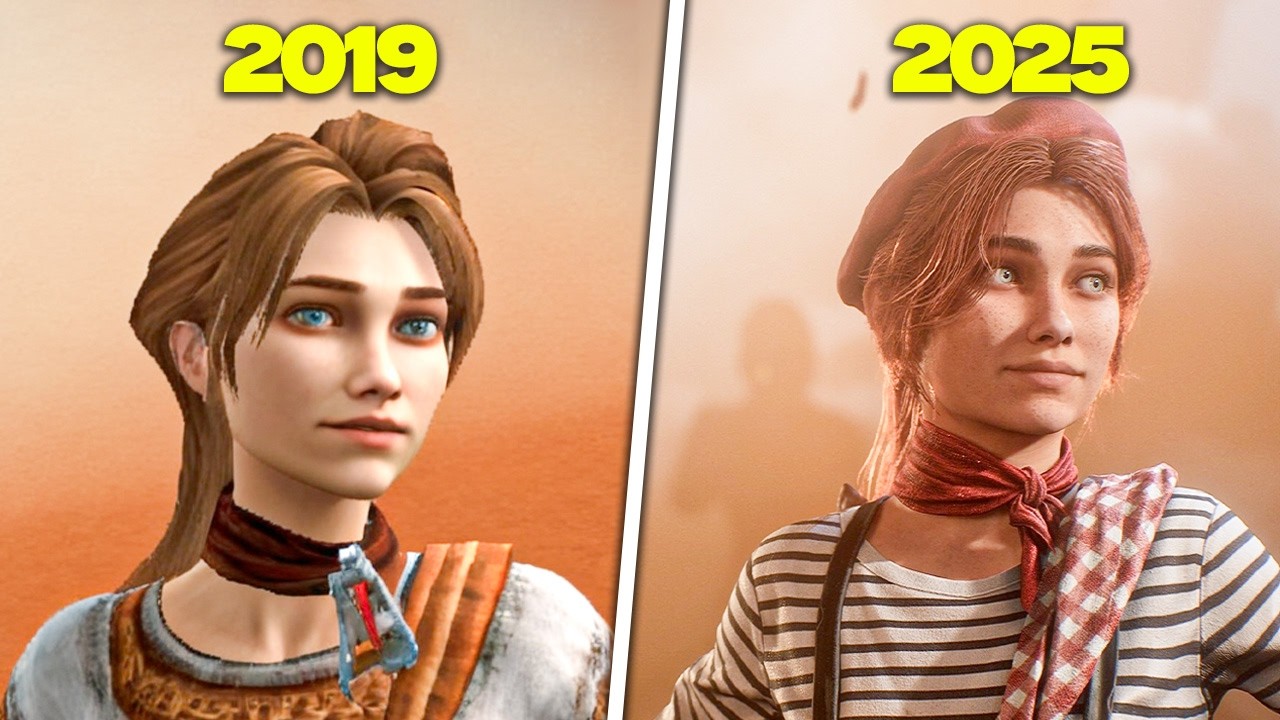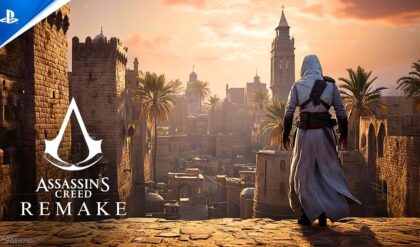What Clair Obscur: Expedition 33 Would Have Looked Like if Released in 2019
Clair Obscur: Expedition 33, released in April 2025, has been hailed as a groundbreaking turn-based RPG, blending real-time mechanics, a haunting Belle Époque-inspired world, and a gripping narrative about mortality. Developed by Sandfall Interactive, a small French studio, the game’s polished visuals, innovative combat, and emotional storytelling earned it universal acclaim, selling 3.3 million units by May 2025. But what if this masterpiece had been rushed to market in early 2019, when it was a rough prototype known as We Lost? Drawing from insights into its early development, this article explores how Clair Obscur: Expedition 33 might have looked, played, and been received if released six years earlier, contrasting its embryonic state with the refined 2025 version.

The Origins of Clair Obscur in 2019
In 2019, Guillaume Broche, a Ubisoft developer and Final Fantasy enthusiast, conceived the idea for Clair Obscur while working on a Might and Magic project. Frustrated by Ubisoft’s unlikely approval for a niche RPG, Broche left to form Sandfall Interactive with a small team, including Tom Guillermin and about a dozen ex-Ubisoft colleagues. Initially codenamed We Lost, the project was a time-themed RPG built in Unreal Engine 4, far from the dark fantasy Belle Époque setting of the final game. The 2019 prototype, as seen in early gameplay footage, featured placeholder graphics, basic character models, and a steampunk Victorian England aesthetic that was scrapped six months into development due to investor feedback favoring a bolder vision.
If released in 2019, Clair Obscur would have been a vastly different game—rough, incomplete, and likely overshadowed by AAA titles like Sekiro: Shadows Die Twice or Kingdom Hearts III. Let’s break down its key aspects and speculate on its potential reception.
Visuals and World Design: A Work in Progress
The 2025 release of Clair Obscur is a visual feast, leveraging Unreal Engine 5’s Nanite and Lumen for stunning environments like the Indigo Tree and Forgotten Battlefield. In 2019, however, the prototype used Unreal Engine 4 with rudimentary assets. Character models were blocky, lacking the detailed animations and expressive faces of the final game’s cast, voiced by stars like Charlie Cox and Andy Serkis. Environments were sparse, with placeholder textures and minimal lighting, resembling early indie projects rather than the lush, painterly landscapes of 2025.
The original steampunk Victorian setting would have featured industrial cityscapes and clockwork contraptions, potentially evoking Dishonored or Bioshock Infinite but without their polish. Exploration was linear, with basic platforming and grapple points, and lacked the world map or camp mechanics that enrich the final game. Secret areas, Paint Cages, and Gestral collectibles were absent, reducing exploration to simple loot collection. A 2019 release would have been criticized for its dated visuals and lack of environmental depth, especially compared to contemporaries like The Outer Worlds.
Combat: A Promising but Unrefined System
The 2025 Clair Obscur is celebrated for its hybrid combat, merging turn-based strategy with real-time dodging, parrying, and Free Aim shots. Inspired by Persona 5, Lost Odyssey, and Sekiro, it features quick-time events (QTEs), Stain-based magic for Lune, and stance mechanics for Maelle. The 2019 prototype, however, had a simpler “active” turn-based system, reminiscent of Super Mario RPG, where timed button presses boosted damage or reduced incoming hits. While innovative, it lacked the depth of the final game’s mechanics, such as Stain synergies, Break meters, or Gradient Attacks.
Characters like Gustave and Lune would have had basic skill sets—melee attacks, simple spells, and no Pictos or Luminas to customize builds. Free Aim shots existed but were clunky, with no weak-point targeting or status effects like Burn or Mark. Dodging and parrying were present but less responsive, with no AP refunds or counterattacks, making combat feel repetitive. Enemies, like early Nevrons, had basic AI and lacked the elaborate animations of 2025’s Chromatic bosses. A 2019 release might have been praised for its combat creativity but criticized for its lack of polish and variety, especially on higher difficulties.
Story and Characters: Underdeveloped but Intriguing
The 2025 Clair Obscur tells a poignant tale of Expedition 33’s quest to slay the Paintress, who erases people of a decreasing age each year via the Gommage. Its narrative, inspired by a painting and a short story by lead writer Jennifer Svedberg-Yen, explores mortality, grief, and hope through characters like Gustave, Maelle, and Lune. In 2019, the story was a loose time-travel concept, lacking the Paintress or the Belle Époque setting. The prototype focused on a generic group of adventurers in a steampunk world, with no clear antagonist or emotional depth.
Voice acting, a highlight of the 2025 game, was minimal in 2019, relying on amateur talent rather than A-list actors. Characters lacked the nuanced backstories and camp conversations that build relationships and unlock Gradient Attacks. The narrative’s earnestness was present, but its delivery was hampered by placeholder dialogue and no cinematic cutscenes. A 2019 release would have struggled to engage players, with reviewers likely calling the story forgettable despite its ambitious premise.
Soundtrack and Audio: Barebones but Promising
The 2025 game’s soundtrack, composed by Lorien Testard, is a haunting blend of somber piano, choral vocals, and energetic combat themes, rivaling NieR for emotional impact. In 2019, the prototype had basic audio, with Testard’s early compositions limited by budget constraints. The lack of a full orchestra or choir meant music felt flat, missing the cinematic flair of the final game. Sound effects for combat and environments were placeholders, reducing immersion.
A 2019 release would have been functional but unmemorable aurally, failing to match the atmospheric depth of competitors like Final Fantasy XV or Persona 5. However, Testard’s raw talent, discovered via SoundCloud, might have earned praise as a highlight of an otherwise underdeveloped package.
Technical Performance: A Buggy Mess
The 2025 Clair Obscur is remarkably polished, with minimal bugs and smooth performance on PS5, Xbox Series X|S, and PC. The 2019 prototype, built in Unreal Engine 4, was riddled with issues—stiff movement, collision glitches, and frequent crashes. Early footage shows characters getting stuck in geometry, requiring save reloads. The lack of optimization would have made a 2019 release a technical disaster, alienating players and reviewers accustomed to smoother indie RPGs like Hollow Knight.
Reception and Market Context
In 2019, the RPG market was crowded with heavyweights. Sekiro: Shadows Die Twice redefined action RPGs, Kingdom Hearts III delivered a long-awaited epic, and Disco Elysium set a new standard for narrative depth. A 2019 Clair Obscur (We Lost), released by a fledgling studio with limited funding, would have struggled to compete. Its small team of ~30 developers, supplemented by minimal outsourcing, lacked the resources to match AAA polish or even mid-tier indies.
Reviewers might have appreciated the prototype’s ambition—its active combat and time-themed story—but criticized its rough visuals, shallow mechanics, and technical issues. Sales would likely have been niche, appealing to hardcore RPG fans but failing to reach the 3.3 million units of 2025. Without Kepler Interactive’s funding or the switch to Unreal Engine 5, Sandfall might not have survived to refine the project, potentially killing the franchise.
How It Evolved by 2025
The transformation from 2019’s We Lost to 2025’s Clair Obscur: Expedition 33 is a testament to Sandfall’s vision and perseverance. Key changes include:
Setting: Shifting from steampunk Victorian England to a dark fantasy Belle Époque France, inspired by a painting and Svedberg-Yen’s story.
Combat: Evolving from a basic timed-attack system to a hybrid turn-based/real-time system with Stain mechanics, Break meters, and Free Aim precision.
Visuals: Upgrading to Unreal Engine 5 for high-fidelity assets, Nanite geometry, and Lumen lighting.
Narrative: Introducing the Paintress and Gommage, with deeper character arcs and A-list voice acting.
Polish: Adding world map exploration, camp mechanics, and extensive outsourcing (e.g., Korean animation team, 30+ musicians) for a AAA feel.
These changes, driven by Kepler’s funding and a pivot six months into development, turned a rough prototype into a Game of the Year contender. The 2019 version, while promising, lacked the scope and refinement to make a similar impact.
Lessons for Players and Developers
A 2019 release of Clair Obscur would have been a cautionary tale about rushing passion projects. For players, it highlights the value of patience—waiting for Sandfall to realize their vision resulted in a modern classic. For developers, it underscores the importance of iteration, funding, and feedback. Sandfall’s decision to scrap the steampunk setting and rebuild with a bolder narrative shows the courage needed to elevate a game from niche to iconic.
Conclusion
If Clair Obscur: Expedition 33 had launched in 2019 as We Lost, it would have been a flawed but intriguing indie RPG, hampered by unpolished visuals, simplistic combat, and a generic story. Its active turn-based system and time-themed premise might have earned a cult following, but technical issues and a crowded market would have limited its success. The 2025 release, with its breathtaking world, innovative mechanics, and emotional depth, proves Sandfall’s six-year journey was worth the wait. As you play the masterpiece that is Clair Obscur, imagine the rough gem it once was—and appreciate the artistry that transformed it into a legend.





